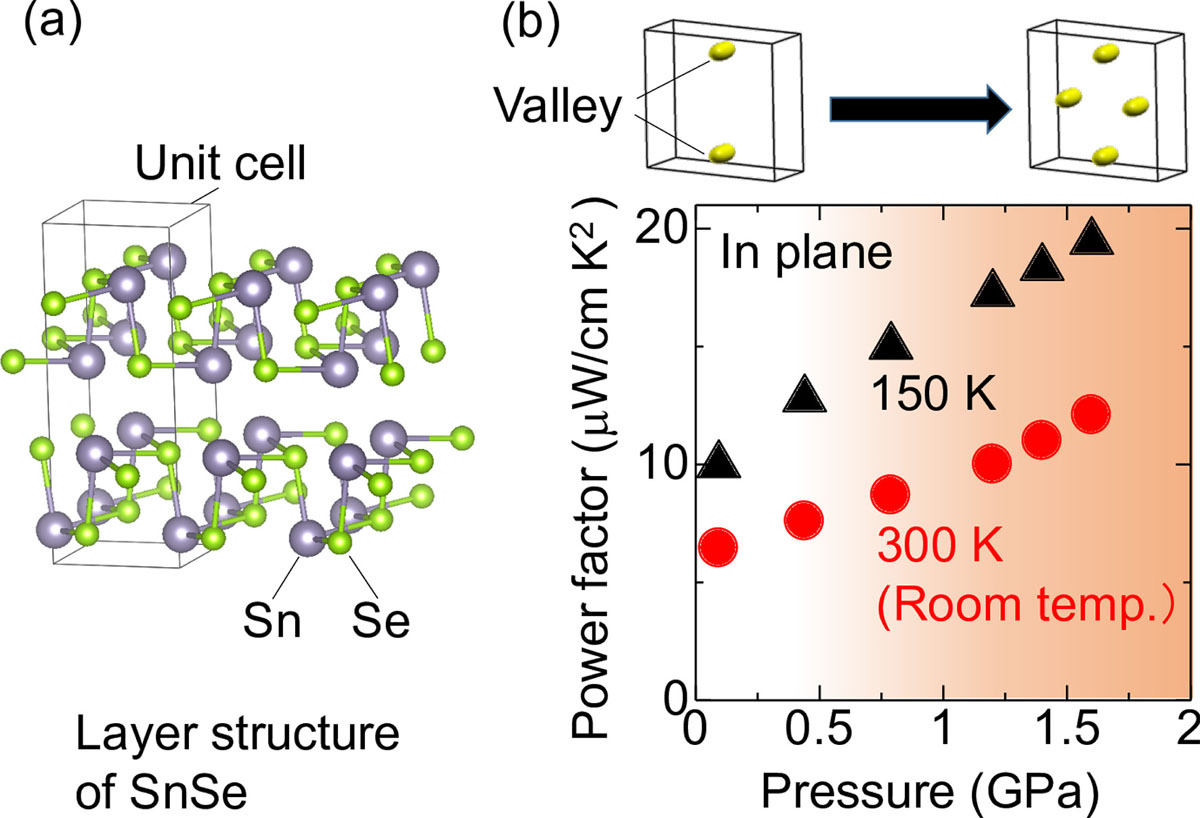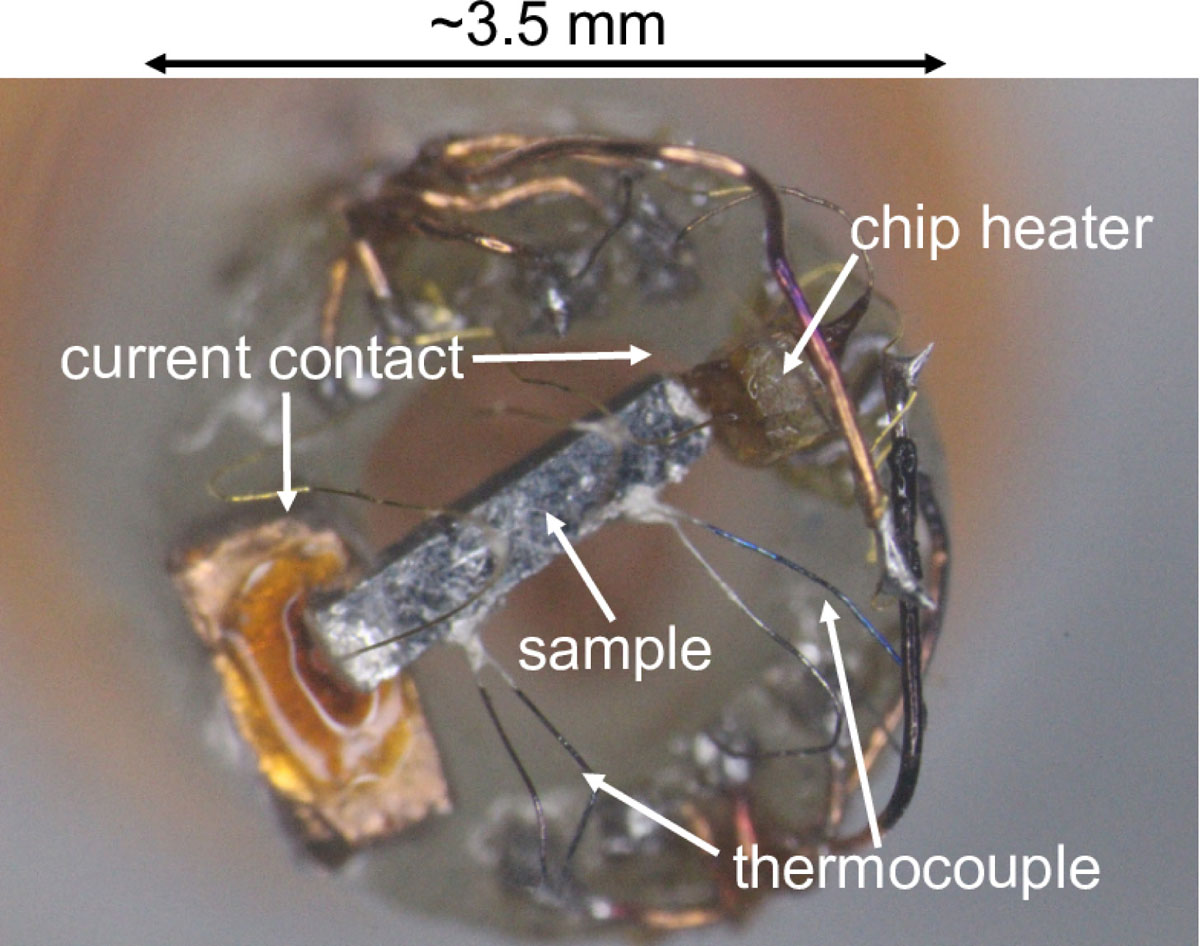Large Enhancement of Thermoelectric Efficiency Due to Pressure-Induced Lifshitz Transition in SnSe
H. Sakai, M. Tokunaga, and Y. Uwatoko
Control of the number of Fermi pockets, i.e., electronic valleys, in conductive materials has recently attracted a great deal of attention in terms of the emerging electronics utilizing valley degrees of freedom. An important physical aspect of the valley engineering is that the emergence and annihilation of the valleys are described by a topological electronic transition known as Lifshitz transition. The Lifshitz transition is totally different from the conventional Landau-type phase transition, because it is not accompanied by any symmetry breaking. Despite many predictions of its important roles on various quantum phenomena, the experimental verification has remained challenging.
In this study [1], we have revealed a marked influence of the pressure-induced Lifshitz transition on thermoelectric efficiency in SnSe (Fig. 1(a)), which has recently become the focus of attention for its high thermoelectric performance [2]. Thermopower, which is proportional to the energy derivative of density of states, is anticipated to be an ideal probe for the Lifshitz transition. However, it has been overlooked so far owing to the lack of a model thermoelectric material, where the valley state is controllable. Here we have discovered that the band structure as well as thermoelectric performance for SnSe is highly sensitive to the external pressure by measuring the quantum oscillation of magneto-resistivity concurrently with the thermopower in a piston cylinder type high pressure cell (Fig. 2).
The obtained pressure dependence of the quantum oscillation frequencies clearly indicates that the number of the valleys increases from two to four at ~1 GPa with increasing pressure (Fig. 1(b) upper panel), as is semi-quantitatively reproduced by the first-principles calculations. At around 1.6 GPa, the four valleys are almost equivalent in size, where the thermoelectric power factor is more than 100% higher than that at ambient pressure over a wide temperature range (10–300 K) (Fig. 1(b) lower panel).
The present result demonstrates the multi-valley state is of great importance for achieving high thermoelectric performance, providing a guide for band engineering for the SnSe-based thermoelectric materials. Furthermore, since atomically thin SnSe films have recently attracted much attention as a new 2D material, the controllability of valley structure presented here may help for exploring their novel functions in the future electronics.
References
- [1] T. Nishimura, H. Sakai, H. Mori, K. Akiba, H. Usui, M. Ochi, K. Kuroki, A. Miyake, M. Tokunaga, Y. Uwatoko, K. Katayama, H. Murakawa, and N. Hanasaki, Phys. Rev. Lett. 122, 226601 (2019).
- [2] L.-D. Zhao, S.-H. Lo, Y. Zhang, H. Sun, G. Tan, C. Uher, C. Wolverton, V. P. Dravid, and M. G. Kanatzidis, Nature (London) 508, 373 (2014).


